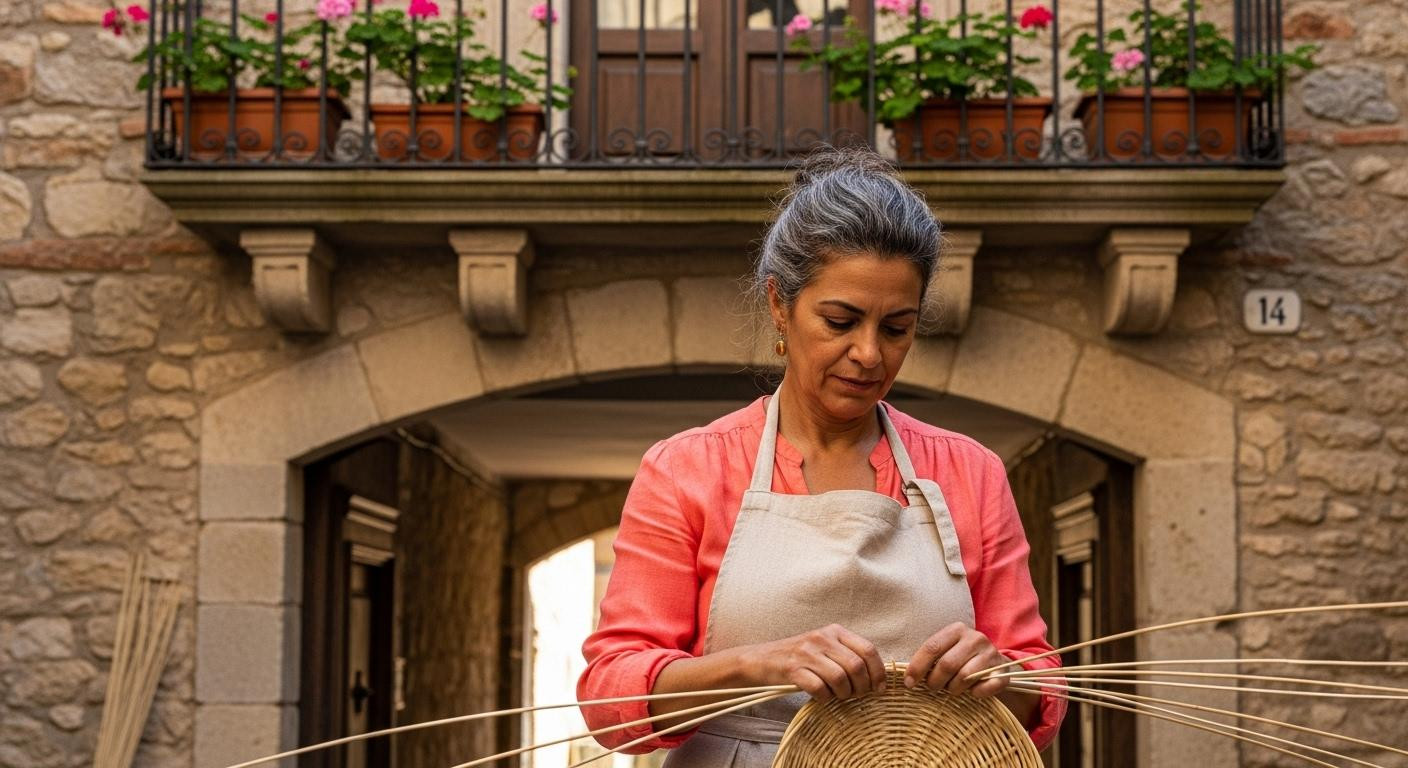At 6:47 AM, golden light touches Castelsardo’s stone passages. A local grandmother carries fresh bread through alleyways where no car has passed since medieval times. The scent of sea salt mixes with morning coffee while the Castello dei Doria’s silhouette emerges from Gulf of Asinara mist.
This is the Sardinia that 4.2 million tourists miss when they crowd Cinque Terre’s commercialized lanes. Here, 5,000 residents move freely through cobblestone passages unchanged since 1102.
The medieval village where cars surrender to stone
Arriving in Castelsardo means accepting defeat. Your rental car stops at the hilltop base, surrendering to passages built when the Republic of Genoa designed streets for donkeys and foot traffic.
You park at small areas near the Cathedral of Sant’Antonio Abate. Then you walk. The stone path leads up through walls that narrow to 4 feet wide in places.
These aren’t tourist-friendly adaptations. Medieval architects built them this way in 1102. Modern vehicles simply cannot pass. Similar hilltop villages across the Mediterranean share this natural protection, but few preserve it as completely as Castelsardo.
The Genoese family of the Dorias knew what they were doing. Their fortress town (originally called Castel Genovese) was designed for defense, not convenience.
The castle passages tourists never photograph
Beyond the main tourist route lies a hidden network. Most visitors photograph the obvious views and leave. They miss the real Castelsardo.
Stone architecture that dictates modern life
Golden terracotta buildings cascade down the hillside. Outdoor terraces perch impossibly on medieval foundations. The cobblestone texture remains unchanged for 900 years.
Flowers spill from balconies onto narrow walkways. Tables from outdoor restaurants claim precious space between stone walls. Baskets hang on ancient doors where families have lived for generations.
The Castello dei Doria’s museum secret
The Museum of Mediterranean Weaving sits inside the fortress chambers. It’s Sardinia’s most-visited museum site, yet many Americans don’t know it exists.
The castle ramparts offer spectacular views across the Gulf of Asinara. The Bell Tower wasn’t built with the church – it was incorporated into village walls and used as a lighthouse. Walking the medieval walkway gives visitors glimpses and unforgettable panoramas.
Walking the dawn hours before day-trippers arrive
The magic happens at sunrise. While tour buses sleep in Alghero (1 hour away), Castelsardo belongs to its residents and early risers.
Handicraft shops in medieval doorways
Artisan workshops open at 7 AM. Traditional basket weaving demonstrations happen in doorways unchanged since the Middle Ages. Local linen textiles hang from stone walls where craftspeople have worked for centuries.
Everything here is authentic: the architectural beauties, the craftsmanship, the typical products, and the still-alive traditions. Like hidden American villages that resist mass tourism, Castelsardo maintains its character through geographic protection.
Pavement cafes serving spaghetti with sea urchin
Local seafood dishes cost $22-35 versus $55+ in Cinque Terre. Morning espresso rituals happen on stone terraces overlooking turquoise waters.
Spaghetti with sea urchin and lobster are local specialties. The narrow cobblestone streets filled with charming restaurants and espresso stops create magical morning moments. You find exactly what you’d expect from a medieval hamlet – at Mediterranean prices that don’t break budgets.
The promontory view that rewards the climb
Reaching the castle ramparts at sunrise reveals why locals climb these passages daily. The Gulf of Asinara spreads below in impossible blue. Torre di Frigiano stands visible across coastal waters.
The contrast hits you: ancient stone warmth meets Mediterranean vastness. This village sits on a rock promontory, reflected in the gulf. Time seems to have stopped in this authentic village of medieval origin.
Walking through alleys, flowers on balconies and outdoor restaurant tables catch the eye. Like traditional Italian artisan experiences, Castelsardo offers genuine encounters with living culture.
Your questions about the secret Sardinian village answered
How do I actually reach Castelsardo without a car inside?
Fly into Alghero-Fertilia Airport (1 hour drive from Castelsardo). Rent a car for the island, but plan to park at the village base. Local buses connect from Sassari (40 minutes), but a car gives you freedom to explore northern Sardinia. Walking the medieval streets is mandatory – geography enforces this rule.
What makes Castelsardo’s weaving tradition unique?
The Museum of Mediterranean Weaving houses centuries of artisan techniques inside the Castello dei Doria. Local basket-making demonstrations continue traditions dating to medieval times. These aren’t tourist shows – they’re living crafts practiced by families for generations in authentic workshops.
How does Castelsardo compare to Cinque Terre or Amalfi Coast?
Accommodation ranges $65-220/night versus $220-440 in Cinque Terre. Castelsardo has 5,000 residents living normal lives versus millions of tourists. You get similar coastal medieval charm with authentic artisan culture instead of commercialized shops. The trade-off: less famous, more genuine.
Morning light warms stone walls as a local weaver opens shutters. The narrow passage remains empty – yours alone for these sacred morning hours. This is the Sardinia that cars cannot reach and tour buses cannot spoil.
